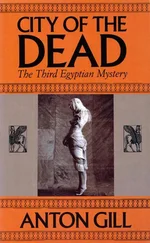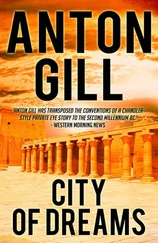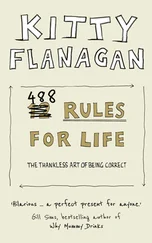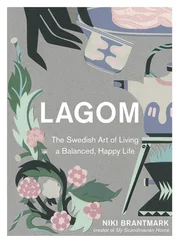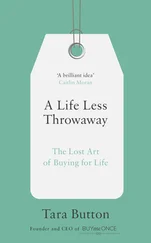Peggy, approaching fourteen at the time of her father’s death, is more succinct in her autobiography, written in the mid-1940s: ‘My father’s death affected me greatly. It took me months to get over the terrible nightmare of the Titanic , and years to get over the loss of my father. In a sense I have never really recovered, as I suppose I have been searching for a father ever since.’ It is hard to determine how far either woman in later life was being disingenuous. Each may have needed an excuse for the wildness in their lives. However, neither was particularly introspective.
Amidst all the press speculation, Florette and her daughters were to discover the true extent of Ben’s fortune. But it would be a long process.
After Ben’s death his powerful brothers, Daniel, Murry, Solomon and Simon, put aside the differences they’d had with him during his life, and pulled together to help his widow and her family. Ben’s International Steam Pump Company, together with a variety of lesser business interests, not to mention his lavish personal tastes, the maintenance of his staff, his mistresses, and a Paris apartment, had absorbed almost all his capital.
As a temporary measure, without her knowledge, the brothers discreetly advanced money from their own pockets to Florette via a private account, and set about the business of unravelling Ben’s affairs. It took seven years to sort everything out and pay off the many creditors. By the time this had been done, all that remained was about $800,000 for Florette and $450,000 for each of the girls. The brothers estimated that Ben had run through about $8 million.
Although the inheritances were no mean sums, they were small compared with the wealth of the Guggenheim empire, and they dictated a change in Ben’s family’s way of living. Florette was proud, and when she discovered that the income she’d been receiving had come from her brothers-in-law, ‘she nearly had a fit’, according to Peggy. (When Florette’s father died in 1916, leaving her $2 million, her circumstances improved considerably, and she was able to repay the loan.) Since Ben had more or less permanently absented himself in 1911, the family had moved into a residential suite at the St Regis Hotel – a Guggenheim stronghold – and the house on East 72nd Street had been let to an aunt of Peggy. Now, in 1912, the St Regis became too expensive, and Florette moved with her daughters to a more modest place on the corner of 5th Avenue and 58th Street – though it did have a 5th Avenue number. Evidently the Seligman family couldn’t or wouldn’t help, and Florette reluctantly started to live on her own money. It is possible that her blood relatives thought she had quite enough to survive on, or perhaps, as she had married into the Guggenheims, it was felt that her maintenance was their responsibility. Either way, no one was going to starve.
But it was a blow to find out just how little Ben had left them with. Hazel Guggenheim told a friend, somewhat melodramatically, that ‘my mother made eggs by the hot water from the faucet’. Servants had to be dismissed, and paintings, tapestries and jewellery sold. Hazel remembered that her father bought paintings by Corot, and ‘owned gorgeous suits and shoes and ties, and wore slippers of Moroccan leather’, and that ‘my mother and he went to the opera every night’. That way of life was gone, and Peggy wrote, ‘from that time on I had a complex about no longer being a real Guggenheim. I felt like a poor relative and suffered great humiliation thinking how inferior I was to the rest of the family.’
The context in which she felt this is best understood by making comparisons. The oldest Guggenheim brother was Isaac. When he died in 1922 he left $10 million. Murry died in 1939 leaving $16 million; Dan in 1930 leaving $6 million. Although Peggy and Hazel were to inherit a further $500,000 apiece from their mother on her death in 1937 – their beloved older sister Benita having died ten years earlier – they still saw their cousins, Murry’s children Edmond and Lucille, coming into $8 million each, and Dan’s children Robert, Harry and Gladys getting about $2 million apiece. Everybody lived in close proximity in New York City and on Long Island, and it isn’t surprising that Peggy, at least, wanted to get away – with Hazel following suit. Benita, at seventeen significantly older at the time of Ben’s death, and gentler and more conventional than her sisters, would follow a different path.
‘After his death,’ Hazel recalled much later to Virginia Dortch, who compiled a portrait of Peggy through the reminiscences of her friends, ‘in order not to offend the Guggenheims, my mother would never marry or even sit alone in a room with a man. I suppose, if father had lived, Peggy would have married bourgeois men and I would have stayed married to them.’ However, this may be disingenuous, and does not take into account Florette’s own eccentricity, however mild it was by comparison with her own brothers’ and sisters’. In any case it isn’t helpful to speculate on what might have been. Peggy and Hazel were rivals for their father’s love and for Benita’s love; later they were rivals for fame and notoriety. For the moment, they turned to religion. ‘After my father’s death I became religious,’ wrote Peggy. ‘I attended the services in Temple Emanu-El regularly, and took great dramatic pleasure in standing up for the Kaddish (the service for the dead).’ The family went into mourning, and Peggy felt ‘important and self-conscious in black’.
Ben’s death as a hero when they were both young girls, and the mythic element lent his death by the fact that his body was never recovered, led Peggy and Hazel to idolise his memory more than they might otherwise have done; but it is doubtful whether his death fundamentally affected the course their lives were to take. More important was the comparative lack of money. The youngest of the Guggenheim brothers, William, sued his older siblings in 1916 over what he considered his illegal exclusion from profits from ventures which had flourished since his departure, specifically a fabulously profitable foray into copper mining in Chile. Unfortunately, he and Ben had signed a disclaimer to participation in the mining ventures of the family firm in January 1912. Florette, loyal to the Guggenheims because of their kindness to her, would have nothing to do with William’s case. The other Guggenheim brothers settled out of court for $6 million, which William, with a reputation for poor investments which led Wall Street to nickname him ‘Willie the Plunger’, and a taste for starlets and beauty queens, big cars, a large staff and a big house, as well as a flirtation with vanity publishing, managed to reduce over the next twenty-five years to virtually nothing. After his estranged wife and her son by him had successfully claimed their rightful shares under New York State law, and after debts and taxes had been deducted, all that the two chorus-liners and two beauty queens who had hoped to be William’s principal heirs at his death in 1941 received was about $1000 apiece. Fortunately for William’s descendants, Simon Guggenheim, knowing his younger brother’s ways, had set up a $1 million trust for his heirs after the lawsuit.
Ben and William had been born and brought up under a less onerous burden than their brothers, to the latters’ resentment; but with hindsight they had cause to be grateful for their father’s severity. Ben and William were the ones singled out for university education before joining the family firm. William, for all his failings, had a sensitive and intellectual streak, and a sense of history which prompted him to write an eccentric but nevertheless important memoir of himself and, more importantly, the early days of the Guggenheim empire. And although Solomon Guggenheim was to demonstrate that an artistic sensibility existed within the family, it was Ben who was the principal inspiration for his middle daughter’s decision to live in artistic circles, and for her love of Europe.
Читать дальше

